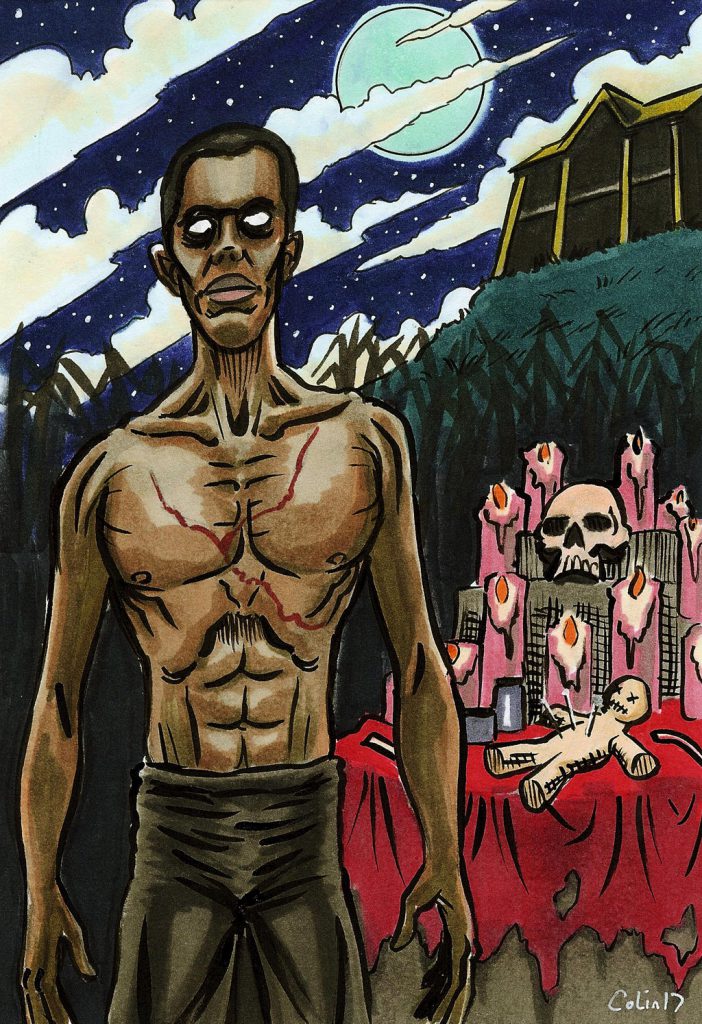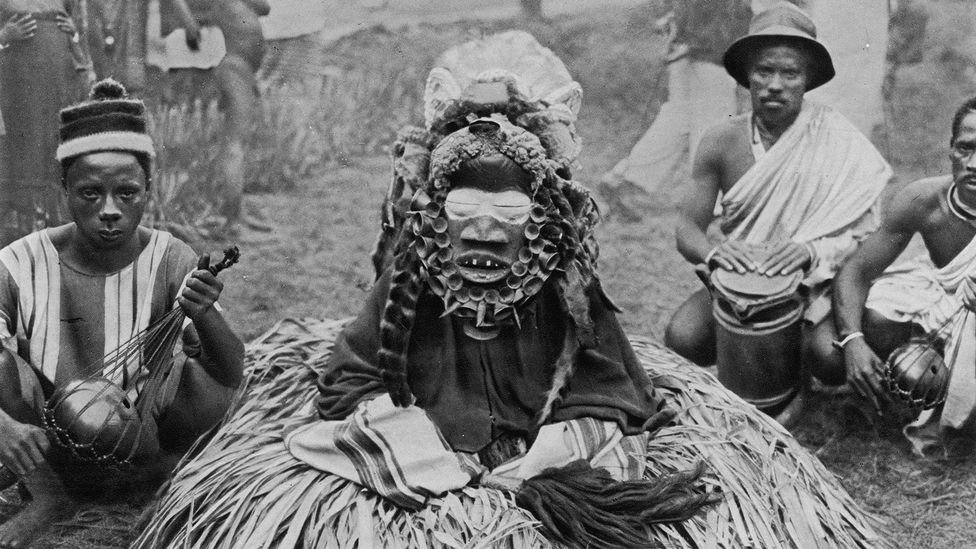Haitian Vodou or Vaudou (Anglicised as Voodoo) is a syncretic religion originating from the Caribbean country of Haiti, located on the island of Hispaniola. It is still practiced throughout Haiti and the Caribbean, Brazil, the American South and other places with an African heritage. New Orleans voodoo and American hoodoo derive from Haitian vodou.

Vaudou is based upon a merging of the beliefs and practices of West African peoples, (mainly the Fon and Ewe), with Roman Catholic Christianity, which was brought about as African slaves were brought to Haiti in the 16th century and forced to convert to the religion of their owners, whilst they largely still followed their traditional African beliefs.
As a part of the voodoo religion, Haitians believe that magicians called bokors, or houngans, can revive the recently dead, turning them into mindless, soulless servants called zombies. “Zombi” is also another name of the Vodou lwa or loa ‘Damballah Wedo’, of Niger-Congo origin; it is akin to the Kikongo word nzambi, which means “god”.
Even if in 2022, most Haitians would tell you zombies are tales to scare children, the belief is deeply entrenched in the local culture.
Haitian Penal Code: Article 249. It shall also be qualified as attempted murder the employment which may be made against any person of substances which, without causing actual death, produce a lethargic coma more or less prolonged. If, after the person had been buried, the act shall be considered murder no matter what result follows.
Bokors and rituals
The methods of creating and controlling zombies vary among bokors. Some bokors use blood and hair from their victims in conjunction with voodoo dolls to zombify their victims. Others methods of zombification involve a specially prepared concoction of mystical herbs, in addition to human and animal parts (sometimes called “coup de poudre” (French: ‘powder strike’)).
Ingestion, injection, or even a blow dart may be used to administer the potion variety. When these substances come into contact with the victim’s skin, bloodstream or mucous membranes, the victim is rendered immobile within minutes, succumbing to a comatose-like state resembling death. The victims soon appear dead, with an incredibly slow breath, and an incredibly slow and faint heartbeat..
The victim retains full awareness as he is taken to the hospital, then perhaps to the morgue and finally buried in a grave. In Haiti, people are buried very soon after death, because the heat and the lack of refrigeration makes the bodies decay very rapidly.

The bokor then has to dig them up within eight hours of the burial, or else they’ll die of asphyxiation. Next, the bokor performs an ancient vodou rite where he or she captures the victim’s ti bon ange, which is the part of the soul directly connected to an individual. He or she can do this by capturing it within seven days immediately following the death of the corps cadavre, while it is still hovering over the corpse, or by spreading poisons in the form of a cross on the threshold of the victim’s doorway.
Either way, this effects a split in the spiritual parts of the victim and produces two complementary types of zombies: the spirit zombi (the zombie of the ti bon ange alone) and the zombi cadavre (the zombi of the flesh, which is composed of the n’ame, the gros bon ange, and the z’etoile) (“The Ethnobiology of the Haitian Zombi” 99).
Then he traps the spirit zombi part of the soul (or zombi astral) in a small clay jar or some other commonplace container, and replaces it with the loa that the bokor controls. This container is hidden in a secret place known only to the bokor and is finally wrapped in a fragment of the victim’s clothing, a piece of jewellery, or some other personal possession owned by the victim in life, and then hidden in a place of secrecy known only to the bokor.
The bokor raises the victim after a day or two and administers a hallucinogenic concoction, called the “zombi’s cucumber,” that revives the victim. Once the zombi has been revived, it has no power of speech, its past human personality is entirely absent, and the memory is gone. Zombies are thus easy to control and are used by bokors as slaves for farm labor and construction work and consequently work as slaves until the bokor dies. Once they are released from their slave labor, the zombies are said to return to their home village or place of burial and die.
One case in 1918 involved a voodoo priest named Ti Joseph who ran a gang of laborers for the American Sugar Corporation, took the money they received and fed the workers only unsalted porridge. Indeed, giving a zombi salt is supposed to restore its personality, and send it back to its grave and out of the bokor’s influence.
